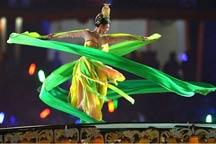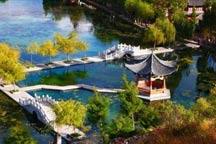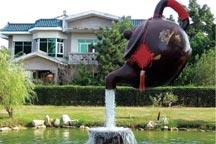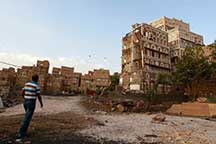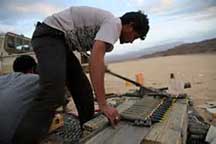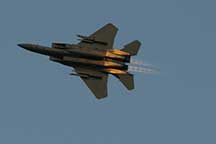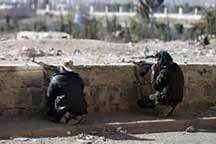In this episode, we wrestle our way through Inner Mongolia, racing from grasslands to forest.
A variety of China's landscape, a diversity of its people. Welcome to Travelogue, welcome to Inner Mongolia. In this episode we’ll show how great the people, who are so called the people who live on the back of a horse, are. All right let's go!
The Mongolian minority is one of the few remaining horse based cultures in the world. Because of their nomadic lifestyle, horses play a very important part in their daily lives. In most places in Inner Mongolia, the horse is still the main mode of transport and from the age of 3, children are able to ride. Ask any Mongolian person and he’ll tell you just how much they cherish their horses. Chances are, they’ll also be able to tell you stories or sing songs based on them.
A favorite past time in Mongolian culture is horse racing and children are often the jockeys because they believe that a race is won based not on the rider’s ability, but rather, the horse’s. The pace of life here is set by the speed of the horse and a young’s man eligibility is measured by his skill as a horseman. If you think that you’re a good rider, I dare you to ride with a Mongolian. You might not feel the same way after.
Another popular sport is wrestling. We’re not talking about the WWF, because there’s nothing fake about this. In Inner Mongolia, wrestling is one of the ‘Three Manly Skills’, aside from horse riding and archery. Genghis Khan was convinced that wrestling was a useful way to keep his army in shape and also, a means of eliminating political rivals.
The object of a match is to get your opponent to touch his back, knee or elbow to the ground. In Inner Mongolia they’re a little bit more relaxed about the rules and if any part of your body, aside from your feet, touches the ground, you’ve lost the match. It’s not easy especially when there are no weight classes or time limits in a match. When a winner finally emerges, he moves to the next round with a new opponent. Of course, there are rules and wrestlers aren’t allowed to strike, strangle or lock their opponent’s legs. I’m guessing that a hit below the belt is also not allowed.
It’s such an interesting sport. This is in Mongolia. You got to get involved. There are all these sports; you got horseback riding. It’s a lot of fun, come one!
Don’t be fooled by the build of these men. They might be stout but they’re skilled. And if you try to pass a fast one on them, like this guy did, chances are they’ll take you down quicker than you can say, “Let’s dance!”
It doesn’t matter if you’re a not a good wrestler, it’s good fun to roll around and test your skill, even if you end up looking pretty silly in the process.
So this is a great party. Everybody’s getting involved, everybody being part of it. That’s more fun! Look around, all these people here. Whatever you want, you can come over.
These vast lands don’t always allow for much company so this shepherd was more than happy to sit awhile and chat. He tells me that the Mongolian minority are natural survivors and a strong and proud group.
Most people think that Mongolians are nomadic and rely on rearing livestock, but in the old days, their ancestors who lives in the forests up north, were hunters and they adapted their lives according to the environment change.
It’s late autumn and winter is near -- time for the farmers to start preparing stacks of hay for their livestock. In Mongolian tradition, it’s important to care for one’s cattle, even if it sometimes means, going to extremes. In these wide open spaces and long roads, you’ll often find drivers beeping their horns from as far away as 200 meters to chase off any cattle that may be on the road. And if the cow can’t hear them, they’ll either drive around or wait till they finally cross. Now, that’s a privilege not all farm animals around the world can say they enjoy. Out here, there’s not much need for traffic police so it’s a good thing the cows are around to act as a speed trap.
In Mongolia, you’ll often find wired fences in the fields. Don’t be deterred by them. It’s not there to keep people out, but rather, to keep the animals in. And if you’re not part of the livestock, the Mongolian people are bound to invite you into their homes and offer you a drink…or many drinks.
This here is a unique location. Hunglet is a tourist spot. This shows the Mongolian lifestyle inside. They named it very unique, this because to every Mongolian, Hunglet means a lot. It means that the last beautiful girl from this area, you can concur, even the married ones.
You won’t find many large stones on the grasslands but when you spot one this big and of this shape, try and find out if it’s part of an ancient ruin. This one here used to be the base of a pillar from a palace. It’s probably not something you expect to see way out here but it’s fascinating that a stone structure like this was able to stand the test of time.
Story time! Let me tell you a very interesting story!
800 years ago, this piece of land belonged to the king of Mongolia, Genghis Khan. Once upon a time he gave a big size of his land to his brother. You might be able to see it right behind me. Do you see these lines? Those lines are the city walls. He built a big city. It’s the centre of this area and this is the hometown of Genghis Khan. So whether he won or lose his battles, he always came back here, his comfortable homeland.
In the past, navigating around these wide-open spaces was a real problem -- everything looked the same and there were no markers that could direct you. That’s where the ‘ao bao’ first came in. They were once used as road signs and a way to separate the lands of different tribes. So don’t be surprised if someone says to you, “turn left at the third aobao”.
After the reign of Genghis Khan, the Mongolian people built ‘ao baos’ as memorials for the heroes who fell in war. The weapons they used during combat were placed inside the ao bao. Later, statues of Buddha replaced the weapons and the ‘ao bao’ became a sacred place to worship and make sacrifices to the gods. The best corn, meat, fruit and alcohol are sacrificed in return for good weather, harvest and fortune.
The tradition is, you pick 3 stones from the foot of a mountain, climb the mountain with the stones and when you descend, place the stones on the ao bao and walk around 3 times before making a wish.
If you drink with the Mongols, chances are, you won’t be spared. It’s a way for them to show you just how hospitable they are and if drinking is a gauge for that, they are extremely welcoming!
This is very interesting. It’s a tradition everybody knows. You go to a Mongolians tent; there are three things you got to do. 1, the Haidan, it’s the most respected one, the blue color. Another thing, like what they do over there. You got to drink this is a tradition. This is an every day thing. When you eat a Mongolian tent, you have to drink.
An environment like this is wonderful and all the people who live in the city are going to be so jealous. This is the best of the best. The best of all the best!
If you’ve never heard this sound, I’ll tell you this – it doesn’t come from an instrument and it’s definitely not from a blow horn. So what is it?
Throat singing. Otherwise known as overtone singing, a Mongolian minority traditional art form. The ‘singer’ changes the sounds by manipulating the resonance created as air passes from his lungs, to his vocal chords to his mouth.
 2009 China Central Television. All Rights Reserved
2009 China Central Television. All Rights Reserved






